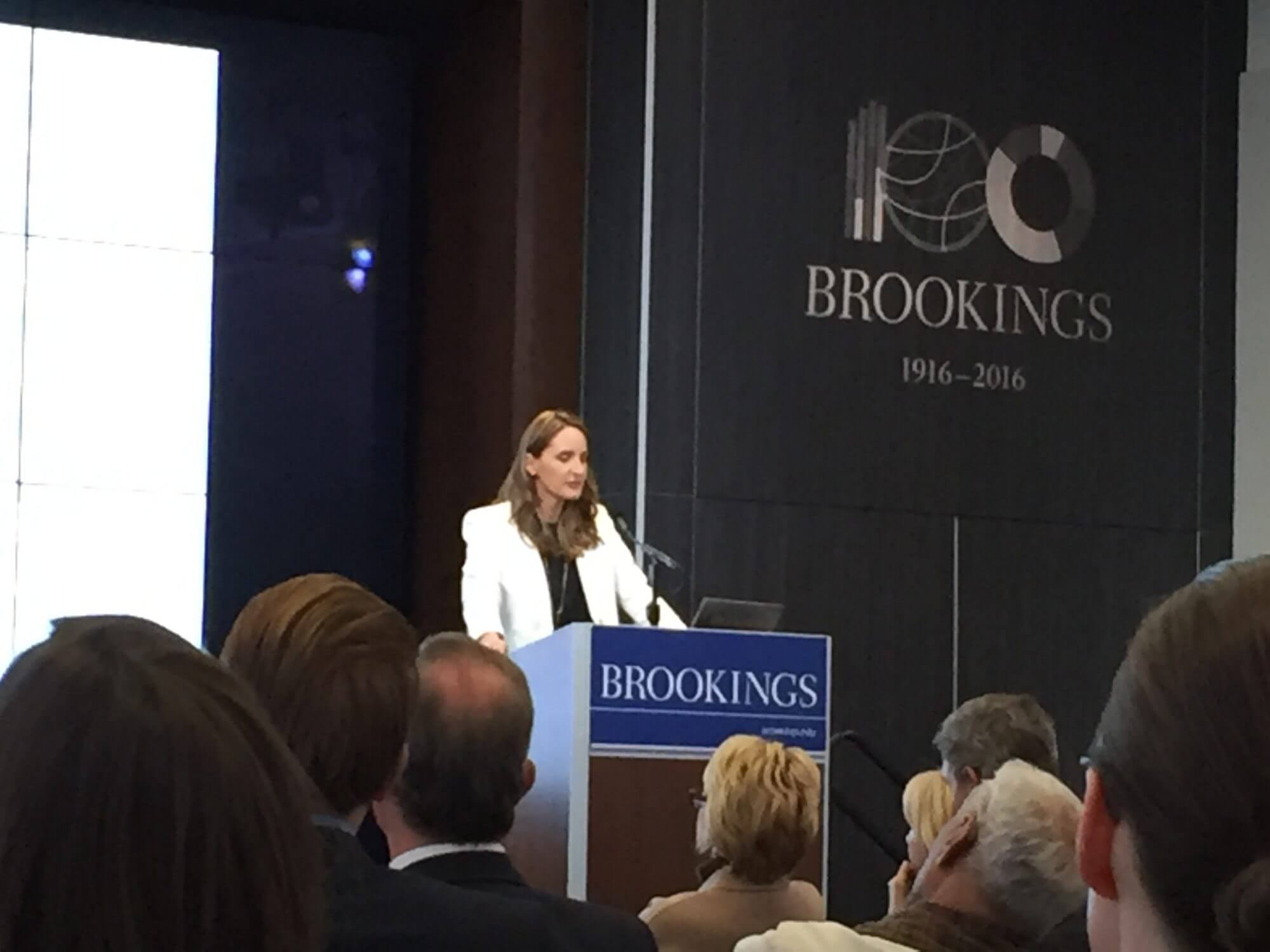WASHINGTON — A prominent financial figure highlighted a new way of funding social programs Monday – social impact bonds, contracts that bring private money to ventures that can improve society.
By bringing increased capital to social programs, social impact bonds could be the solution for issues that have “plagued societies for centuries,” said Sir Ronald Cohen, chairman of the Global Social Impact Investment Steering Group and the Portland Trust.
“I’m really here to preach a revolution,” Cohen told a Brookings Institution conference on social impact investing.
The bond contracts are designed to do for social ventures what traditional venture capital does for technology startups. By connecting social program startups to concrete metrics, investors can measure their returns in a way that was not possible in the past, Cohen said.
“If you can connect it with a financial return, then you can do what happens in capital markets,” Cohen said. “You can allocate capital to those who deliver real performance.”
The bonds, also called pay-for-success bonds, are contracts designed to support social programs while limiting government risk. Most widely used in areas like education and social services, they were first employed in Great Britain to back a program aimed at reducing prison recidivism rates in 2010.
Unlike traditional bonds, the contracts only pay off if the program being funded shows success by reaching certain predetermined goals. The terms of the bonds are also determined on a case-by-case basis between the government and the investors providing upfront capital – whether it be institutional investors, foundations or both. With the help of an intermediary, the parties negotiate details like interest rates and contract length beforehand.
Private investors put up the money to start a program and the recipient works toward metrics set in advance during the contract period of the bond. The government only pays out a return to investors if the program is deemed a success.
The program is in its infancy. There are currently 56 social impact bonds in effect worldwide, with over $200 million provided in upfront capital. The bonds have grown since last year, from about $162 million in upfront capital, according to Brookings Institution research, but they are still limited in scope.
The largest impact bond in effect targets 18,000 schoolchildren in India in a program aimed at increasing access to education for girls. Twenty-five of the 38 contracts analyzed by Brookings serve 1,000 people or fewer.
“To date, most of the social impact bonds have been fairly small in terms of their reach,” said Emily Gustafsson-Wright, fellow at the Brookings Institution’s Center for Universal Education.
In addition, it can be difficult to determine metrics for success in a social impact bond contract, as some social services are not easily quantifiable. This difficulty increases the time and resources needed to create an agreement in the first place – one bond in Massachusetts required over 1,100 billable hours of legal counsel, said Amy Olson, associate at Ropes & Gray LLP, while speaking at a 2014 conference about social investing.
“I think all of Boston’s best firms were involved in this transaction,” Olson said then. “It was really quite complex.”
It is also too early to tell how effective some contracts will be.
The NYC Able Project for Incarcerated Youth, a social impact bond designed to lower the reincarceration rate among teenagers at Rikers Island, closed down in the third year of its four-year term after failing to meet its goal. It was the first social impact bond marketed in the United States. The failure represents a loss of $9.6 million between Goldman Sachs and Bloomberg Philanthropies. And with other bonds running anywhere from one and a half and 10 years, real results could still be a long way away.
Despite these challenges, social impact bonds have seen support from both sides of the aisle. Republican Governor Nikki Haley of South Carolina recently announced a $30 million program to improve the health of mothers and children living in poverty, and Connecticut’s Democratic Governor Dannel Malloy unveiled a $12 million bond to reduce parental substance abuse and stabilize families.
Going forward, Cohen predicts continued growth in the social impact bond market. By shifting social investing to a bottom-up approach, he said, social investing capital will be rewarded to smaller, more effective ventures.
“By bringing measurement into the equation, by being able to pay for outcomes rather than inputs, we open the door to innovation,” Cohen said.


